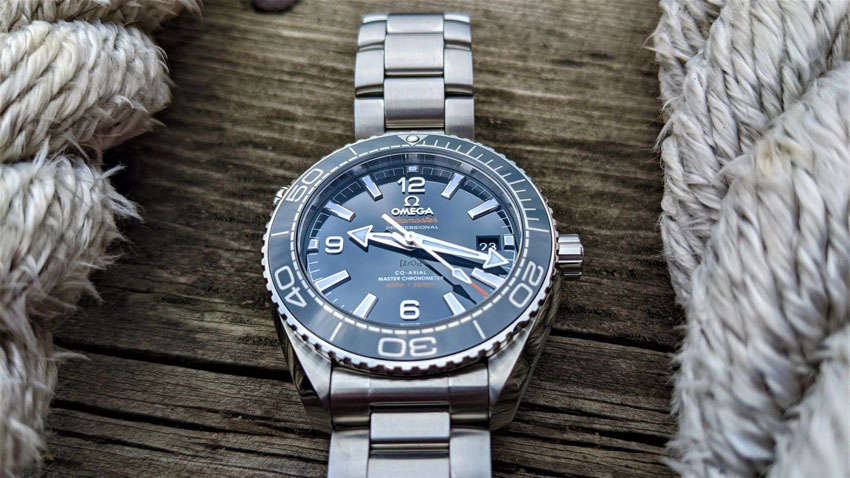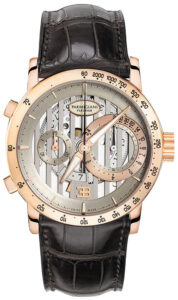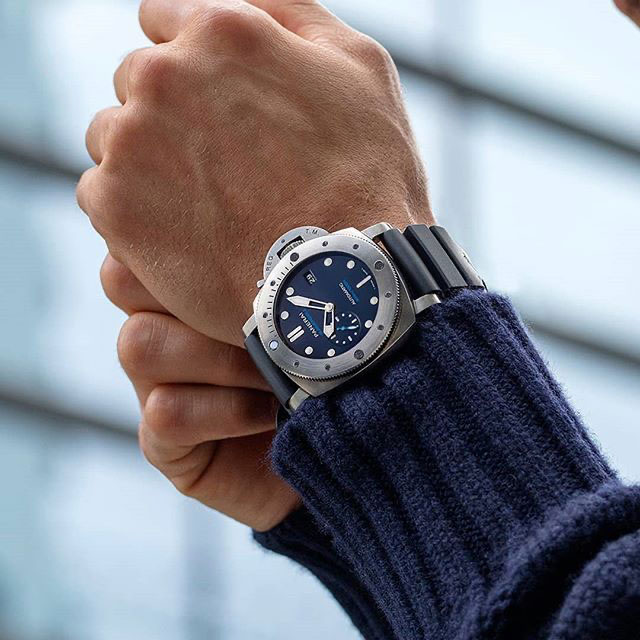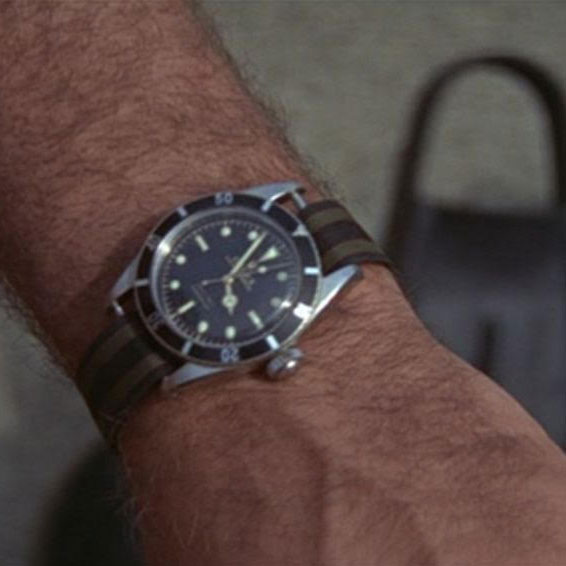
The Bezels That Move Us
The definition of a tool watch is not as clear as it may seem. And this is a topic that we will delve into in some detail in a later issue. Suffice it to say, however, that any watch that features a timing bezel, is inherently a tool watch, as it allows the wearer to measure units of time independently from the three hands on the dial that show the current time and, as such, is a tool for performing an activity.
Some bezels seem specific to a genre. Diving, racing, piloting, cardiac diagnosing, traveling across time zones are all activities where watches have been designed with the unique timing needs of the wearer in mind, beyond just telling the time. And those designs are most often realized with a timing bezel.
So how many unique timing bezel designs are deployed? There are many great reference articles out there that lay this out. The most comprehensive such article that we have found is from the international watch retailer Ethos Watch Bouthiques. You can find this article here: Ethos Watch – Understanding Bezel Scales.
To summarize, here are the bezel scales most often found on modern tool watches:
- Count-up (elapsed time)
- Count-down (specific duration timing)
- Tachymeter (speed and distance timing)
- GMT (second time zone, often across long-distance international time zones)
- 12-hour rotating (second time zone, typically for intracontinental locations)
- Compass (directional positioning relative to true North)
- Telemeter (distance calculation from visible and audible events, e.g. lightning and artillery fire)
- Slide Rule (mathematical equations, usually involving distance and time)
- Pulsometer (measuring heart rate)
Rather than provide examples of each, describe the bezel markings and the methodology for engaging these functions, I will just refer to the article linked above. It’s a great reference piece that all tool watch enthusiasts should bookmark.
Some of these bezel functions require that the bezel turn, either unidirectionally or bidirectionally. Others are fixed and the tracking is done by the movement of one of the hands on the dial in relation to a point on the static bezel.



From a cosmetic design perspective, a timing bezel carries a certain gravitas when worn. It generally identifies the wearer as someone who takes their timepiece seriously. Of course, some iconic watches, like the Rolex Submariner, are often selected for their status alone, and the wearer may have no real idea what that numbered bezel is used for. This is especially true for the solid gold versions, and perhaps less so with the stainless and gold variants. Many may not even know that the bezel is designed to turn until one day their wrist bumps into a door jam and suddenly, the triangle at 12 o’clock now sits closer to 11 o’clock. “What the H…, my watch is broken!” Truly sad.

Timing bezels have found their way onto dress watches for sure. And the gravitas is a bit different, but nonetheless obvious. Chronographs are where this is most often seen. Whether in stainless or a precious metal, the look of a chrono signals a watch enthusiast. Status seekers abound here as well, but the pushers almost compel the wearer to understand the function of the bezel and the timing features of the watch.

No bezel is more prominent and more versatile than the count-up bezel that measures elapsed time, more commonly known as the diving bezel. Most credit Blancpain with its initial use as the most distinctive characteristic of its first dive watch, the Fifty Fathoms. The thoughtfulness of its design had the bezel turning only counterclockwise, to ensure that an underwater event would not inadvertently move the bezel to show an incorrect decrease in elapsed time and put the diver in danger of believing that there was more time left before their oxygen tank was empty. This feature was patented, forcing other dive watch manufacturers, including Omega and Rolex, to install bi-directional bezels for many years, despite the inherent risk that they posed to scuba divers.
There are few manufacturers who do not boast at least one diver in their collection. This includes prominent Swiss lines to upstart independents and certainly Japanese watchmakers. And most feature a turning count-up bezel, along with the occasional count-down bezel. The only exception being quartz watches such as Casio’s G-Shock where both count-up and count-down timing features are often present, albeit digitally displayed.
I know that some of you are screaming, what about Panerai? Most of their watch line-up have no timing bezels. True, this line was created for underwater use (before the invention of self-contained scuba tanks) and is certainly water resistant, but it’s likely that today’s underwater enthusiasts would choose one of Panerai’s Submersible line of watches if diving without a modern dive computer. Their Submersibles are equipped with a tried-and-true diving bezel.



The count-up bezel and the count-down bezel are useful for many everyday tasks besides scuba diving. If you are boiling eggs, cooking a frozen meal or just waiting to move from the airport lounge to the gate ahead of a flight, being able to time events up to sixty minutes is a real convenience to have right there on your wrist.

There’s also the cosmetics of a dive watch. Whether on Sean Connery, Steve McQueen, Daniel Craig or any other iconic figure, when they don a dive watch, the world notices the watch, not just the man. Since the high-definition era began in home theater, watch enthusiasts have become obsessed with what watches the characters that they love are wearing. Only recently has precise identification of watch manufacturer and model been possible.
In the VCR era, for those of you who have memories of such, compromised picture quality often obscured important design elements making identifying these watches more of an informed guess.


Sean Connery as Bond in Thunderball wearing his now legendary Rolex 6538 on a grosgrain textile strap, which has also become a much-imitated legend. This closeup wrist shot helped dive watch fans confirm the Rolex model number and era as well as the pattern of the textile strap.
While mimicking the wardrobe and accessories of our favorite leading men may not be specifically on our mind, it’s no secret that the right watch, usually a watch with a timing bezel just works. Let’s admit it, when we strap on a diver, we know that it impacts our appearance, and it’s never negative! This is true of all watches with timing bezels.They look intelligent, purposeful and dare I say it, masculine. And most of those attributes are viewed positively. So don’t expect these bezels, and the watches that utilize them, to fall out of favor anytime soon.


Diver watches, like this Omega Diver 300m and the Citizen Promaster, always seem to enhance a guy’s look, regardless the occasion.
